History of AAPT — Executive Office
Until 1957 the Association had operated as an unincorporated body, but corporation papers were drawn up that year. The immediate reasons were to put the organization in a stronger legal position to deal with employees and to accept possible bequests—not that there were many employees; AAPT from the beginning was the product of volunteer labor except for secretarial help needed for the journal and to facilitate committee work as necessary. Even then, there was a great deal of institutional help, as there is now, from colleges and universities at which officers were residents. In the early days, Paul Klopsteg made use of CENCO secretarial personnel. But the work of AAPT expanded, with some funding assistance from NSF and other agencies, and the level of activities rose in the decade of the fifties.
In 1962 the Association was able to establish an Executive Office. J.W. Buchta was the first Executive Secretary; on retiring from the University of Minnesota, he set up shop in Washington, initially with space rented from the National Science Teachers Association (NSTA). A glutton for work, Buchta launched the new journal, The Physics Teacher, ran the teacher recognition program, handled the collection of AAPT dues, and did what seems a thousand other things. It was very nearly a one-man operation, except for typing and filing. Jay Buchta was always a man of boundless enthusiasm and vitality. Amid the inevitable respiratory infections of a Minnesota winter that not even he could escape entirely, his undiminished cheerfulness and enterprise were almost exasperating. His death in October 1966 after a brief illness came as a blow to the Association, since no backup had been provided. AAPT veterans and novices alike rallied to the aid of Melba Phillips (then President) and the other officers in meeting the emergency. The Executive Office duties were divided.
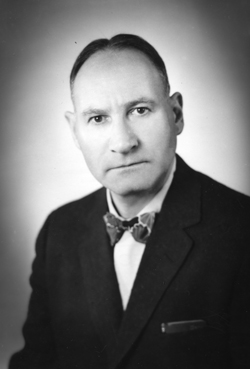
Mark Zemansky
Courtesy of the AIP Emilio Segrè Visual Archives
Since that time, editing The Physics Teacher has been a separate operation. Dues collection, along with maintenance of mailing lists, were handled by AIP until AAPT took it over once again in 1982. In September 2001, AAPT returned the fulfillment of library subscriptions to AIP. The Association was very fortunate, at this critical time, in securing the services of Mark Zemansky as Executive Secretary. Zemansky, a former AAPT President, had retired from the City College of New York and was living within commuting distance of AIP headquarters in New York, where it was possible to arrange for office space and secretarial and administrative assistance. Zemansky's term of office began March 1, 1967, and he served until the middle of 1970.
By 1968 it became evident that NSF would phase out the several national education commissions in scientific disciplines. AAPT had from the start been very intimately involved with the Commission on College Physics, as we shall see, and it seemed an Association responsibility to take over many of the activities, duties, and responsibilities of the Commission.
A committee chaired by Bailey Donnally (then President-Elect of AAPT) was appointed in 1969 by President Ronald Geballe to study the problems involved. This committee recommended various steps subsequently taken by the Executive Board and the Council. Among them were that all the duties of the previous Executive Secretary and many of the duties of the elected Secretary be performed by an academic person who should be named the Executive Officer. It was recommended that the office of this new officer be located at the institution with which he is connected, similar to the present arrangement for editors of AJP and TPT, although the Executive Officer would be on leave from his regular duties. The Executive Board, however, left the final decision on location to the incoming Executive Officer.
Wilbur V. Johnson, who had served as executive officer of the Pacific Northwest Association for College Physics (on leave from Central Washington State College) was chosen for the position. Various considerations made it seem more advantageous to locate the office in Washington, DC, rather than in Seattle, the headquarters of the Pacific Northwest Association. One important factor was easy access to other organizations, especially the Commission on College Physics (CCP), then located at the University of Maryland. Johnson was appointed in June 1970, and the Washington office opened in October.
Among the new responsibilities assumed by AAPT in 1970 was the establishment of two new committees which had been subsidiaries of the Commission (CCP): the Committee on Physics in Secondary Education (CPSE) and the Committee on Physics in Two-Year Colleges (CPTYC). These were appointed jointly with CCP and met in the autumn of 1970. Staff and financial support for both committees came from CCP through September 1971 when the Association was to assume full responsibility. An overall policy committee, the Council on Physics in Education (CPE) was supported from CCP for the same period.
The CCP had enjoyed relatively lavish funding, lavish certainly in comparison with AAPT financial resources, and had introduced many services to the physics community as a whole. Efforts of the Association to continue and to expand these services, coupled with retrenchment on the part of governmental and other outside sources of funds and followed by the onset of double-digit inflation in 1973, loomed as a threat to the stability of the organization. Under the new administration in Washington, grants for science and science education were cut back. Moreover, the journals were particularly vulnerable to inflation: the price of paper rose by 30% in less than two years, and the publication costs to the Association increased by 32% in the same period.
Early in 1973 it became evident that AAPT could not maintain the level of expenditure possible with commission support, and that retrenchment was necessary. Fortunately AAPT leaders, notably the President, E. Leonard Jossem, were able to handle the situation. Rather stern measures were called for, and the person who put them into effect was Arnold A. Strassenburg, who had been chosen by the Executive Board in January 1972 to become Executive Officer in September of that year.
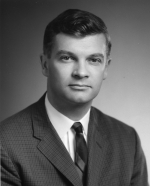 Arnold Strassenburg had served as staff physicist for CCP for two years (1963-65), while on leave from the University of Kansas. In 1966 he came to the State University of New York at Stony Brook where he taught physics while spending half time as head of the AIP Division of Education and Manpower. The pressure for emphasis on education to produce more physicists had declined by the late sixties, and the governing board of AIP decided to cut back drastically on educational activities in 1971. Strassenburg was thus free in 1972 to take the job as Executive Officer of AAPT on a half-time basis, provided the office was moved to Stony Brook. John C. Muster, who had been acting as staff physicist at the Executive Office, was named acting executive officer to fill in between the time of Will Johnson's resignation and the move from Washington, DC, to Stony Brook.
Arnold Strassenburg had served as staff physicist for CCP for two years (1963-65), while on leave from the University of Kansas. In 1966 he came to the State University of New York at Stony Brook where he taught physics while spending half time as head of the AIP Division of Education and Manpower. The pressure for emphasis on education to produce more physicists had declined by the late sixties, and the governing board of AIP decided to cut back drastically on educational activities in 1971. Strassenburg was thus free in 1972 to take the job as Executive Officer of AAPT on a half-time basis, provided the office was moved to Stony Brook. John C. Muster, who had been acting as staff physicist at the Executive Office, was named acting executive officer to fill in between the time of Will Johnson's resignation and the move from Washington, DC, to Stony Brook.
The services offered by the Executive Office expanded significantly under Strassenburg's management. Except for the two years (1975-77) he spent on leave at the National Science Foundation, he served as Executive Officer from September 1972-August 1982. During the two years Strassenburg was on leave, Melba Phillips acted as Executive Officer.
Strassenburg announced in 1981 his desire to return to full-time teaching by September 1, 1982. E. Leonard Jossem was appointed as chair of a search committee charged with forwarding a short list of nominees for Executive Officer to the Executive Board. The search began in earnest in the fall of 1981 and interviews were conducted at the APS/AAPT Joint Winter Meeting held in San Francisco. Two of the candidates were invited to Stony Brook for the final interviewing process. In the judgment of the Executive Board, it was necessary to require that "during the first year the Executive Officer will be expected to serve the Association full time at its offices in Stony Brook. The Executive Board will consider modifications in these terms in subsequent years." The Executive Office had become so complex that a move could no longer be considered lightly.
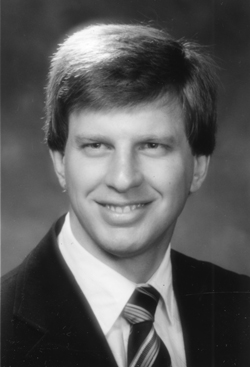
Jack M. Wilson
Courtesy of the AIP Emilio Segrè Visual Archives
On March 11, 1982, the Executive Board offered the position to Jack M. Wilson, then director of the Division of the Physical Sciences and former chair of the Physics Department at Sam Houston State University in Huntsville, Texas. Wilson had begun his career at Sam Houston teaching and doing research in the physics of liquid crystals and in Mossbauer spectroscopy of sickle cell hemoglobin. He was the founding chair of the High School Science Symposium and had directed teacher institutes sponsored by the NSF and the Department of Energy. He was in the final year of a three-year-long, NSF-sponsored project to integrate the computer into the advanced physics laboratories.
Wilson joined AAPT on August 1, 1982. Once again AAPT was fortunate to have someone who could help with the transition. Timothy C. Ingoldsby had come to AAPT as the staff physicist in September 1979. He had been a popular physics teacher at Omaha Westside High School. In 1981 he became the Associate Executive Officer, taking over much of the day-to-day operation of AAPT. His presence in the office made the transition period particularly smooth, and he provided the leadership in the automation of the Executive Office.
Initial discussions about the acquisition of a computer system began in the late 1970s; planning began in earnest in 1980. A Wang VS-80 computer was purchased and a contract let for the development of subscription fulfillment software. Word Processing was operational immediately, and typesetting was added in 1982. Non-member subscription fulfillment was taken over by AAPT in 1981, but was returned to AIP in 2001. In 1982, shortly after Wilson's arrival, all membership processing was taken over by the AAPT office. Ingoldsby was primarily responsible for the successful and uneventful automation. In 1983 he left for an industrial computer management position. Ingoldsby also left a legacy of successful high school physics projects, including the AAPT/NSTA High School Physics Achievement Test(s).
In the fall of 1983, the Executive Board appointed a search committee to consider the possibility of moving the Executive Office to a new location. Wilson expressed the desire that any new location afford him the opportunity to return to teaching on a part-time basis. The search committee narrowed the choices to two sites and forwarded their recommendation to the Executive Board before the end of 1983. At the APS/AAPT Joint Winter Meeting in San Antonio in January 1984, the Executive Board selected the University of Maryland as a new home for AAPT. In an ironic twist, AAPT returned to the site of the Commission on College Physics some 12 years earlier.
The Maryland office was opened on Monday, June 11, 1984. A dedication of the new office was held on June 30, at the close of the summer meeting that took place at the University. Melba Phillips spoke on the history of the Executive Office and its odyssey from Washington to New York to Washington to Stony Brook and back to College Park in the D.C. area.
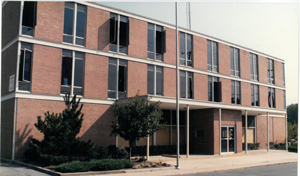 In 1986 Executive Board members and the Executive Officer began to consider the advantages of AAPT owning its own building. In a specially called Executive Board meeting in August, the Board ratified the purchase of a building in College Park. Renovation of the building was completed in late December and AAPT moved its headquarters into the building on December 21, 1986. On January 24, 1988, during the Annual Joint Meeting of APS and AAPT, the new building was dedicated as The Homer L. Dodge Building, in recognition of the first President. Homer Dodge's children, Norton Dodge and Alice Dodge Wallace, had generously provided $200,000 to AAPT toward the purchase of the building and as a challenge to other members. The past presidents of AAPT were also major contributors. The AAPT building fund committee, chaired by Past President Janet Guernsey, raised a total of more than $400,000. In January 1995 AAPT made the final payment on The Homer L. Dodge Building mortgage.
In 1986 Executive Board members and the Executive Officer began to consider the advantages of AAPT owning its own building. In a specially called Executive Board meeting in August, the Board ratified the purchase of a building in College Park. Renovation of the building was completed in late December and AAPT moved its headquarters into the building on December 21, 1986. On January 24, 1988, during the Annual Joint Meeting of APS and AAPT, the new building was dedicated as The Homer L. Dodge Building, in recognition of the first President. Homer Dodge's children, Norton Dodge and Alice Dodge Wallace, had generously provided $200,000 to AAPT toward the purchase of the building and as a challenge to other members. The past presidents of AAPT were also major contributors. The AAPT building fund committee, chaired by Past President Janet Guernsey, raised a total of more than $400,000. In January 1995 AAPT made the final payment on The Homer L. Dodge Building mortgage.
The dedication of The Homer L. Dodge Building was attended by many members as well as officials of the University of Maryland and the various local governments. Dr. John Toll, then Chancellor of the University of Maryland system, gave an insightful talk on how much it meant to the University of Maryland to have AAPT located close by. It was particularly interesting since Toll was one of the original signers of AAPT's Articles of Incorporation and had served as SUNY-Stony Brook's President when AAPT moved there in 1982.
In 1990 the American Institute of Physics (AIP) and The American Physical Society (APS), which occupied space in the AIP building on East 45th Street in New York, decided to move the headquarters of both organizations to the vicinity of Washington, DC. AAPT was invited to join AIP and APS in occupying a common building. At the 1991 Winter Meeting, the AAPT Executive Board voted to accept this invitation, provided suitable financial arrangements could be made.
A committee was appointed to work with representatives of AIP and APS. Although the decision was not unanimous, at the 1992 Winter Meeting, the Board, by a substantial majority, committed AAPT to participate in this new enterprise. A new corporation, the American Center for Physics, with representation from AIP, APS, and AAPT, was established. The decision of this group was to purchase land and construct a building in College Park, MD. The building was occupied in late 1993. There was a formal dedication ceremony in April 1994. M.R.C. Greenwood, Associate Director for Science with the White House Office of Science and Technology Policy, was the keynote speaker, and remarks were given by Maryland Governor William Donald Schaefer, NSF Director Neal Lane, and others. A reception followed for about 300 invited guests.
AAPT elected to keep The Homer L. Dodge Building. Honoring a commitment to the Dodge family, the Dodge name and the plaque honoring Homer L. Dodge have been transferred to the AAPT space in the American Center for Physics building. The Berwyn Road property from which AAPT receives rental income, remains The Homer L. Dodge Building.
 In January 1990, Jack Wilson announced his resignation as AAPT Executive Officer, effective July 1, 1990. After an extensive search, a committee of the Executive Board recommended the appointment of Bernard V. Khoury as Executive Officer. Khoury had been serving as Associate Vice Chancellor for Academic Planning and Policy at the University of Maryland. Before that time, Khoury worked at the Educational Testing Service in Princeton, New Jersey, as Executive Director for the Graduate Record Examination Board. The Board accepted the recommendation, and Khoury took office on July 1, 1990.
In January 1990, Jack Wilson announced his resignation as AAPT Executive Officer, effective July 1, 1990. After an extensive search, a committee of the Executive Board recommended the appointment of Bernard V. Khoury as Executive Officer. Khoury had been serving as Associate Vice Chancellor for Academic Planning and Policy at the University of Maryland. Before that time, Khoury worked at the Educational Testing Service in Princeton, New Jersey, as Executive Director for the Graduate Record Examination Board. The Board accepted the recommendation, and Khoury took office on July 1, 1990.
Immediately preceding the 1990 Summer Meeting in June, the Executive Board and a number of former AAPT officers and Board members participated in a retreat. Besides defining some of the problems and opportunities facing AAPT, the retreat provided an excellent opportunity for the new Executive Officer to become better acquainted with AAPT.
In 1991 the Executive Board decided to reactivate the search for an Associate Executive Officer. The Board unanimously accepted the recommendation of a search committee; and on January 1, 1992, Jack Hehn began his duties as Associate Executive Officer. In 1996, Hehn took a sabbatical to serve at the National Science Foundation. In Hehn's absence, Warren Hein was named Associate Executive Officer and was invaluable to various programs as well as administrative duties. At the end of Hehn's sabbatical, he returned but Hein also was asked to stay at AAPT. In 1999, Hehn left AAPT to become the Director of Education for AIP.
Khoury continued as AAPT Executive Officer (EO) for 16 years - stepping down in mid-2006. Among many activities, he played an extensive role in working with the Executive Board members, AIP, and APS during the move of AAPT to the American Center of Physics and later in the eventual sale of the Dodge building. As noted above, he was ably assisted by Associate Executive Officers - including Jack Hehn and Warren Hein. Past-President Charles Holbrow also played a significant role as Senior Staff Physicist during the later Khoury years, especially in organizing successful topical conferences that served to engage and attract a broader AAPT membership base.
After a national search, the Executive Board's search committee recommended that Toufic Hakim be chosen as the next Executive Officer (EO). Hakim came to AAPT from a Professor of Physics position (and serving as Director of Research and Sponsored Programs) at Kean University. He began his formal term as EO in October of 2006, with Robert Hilborn also continuing as Senior Physics Fellow. After Hakim's departure in March 2008 the Board approved Charles Holbrow (Past-AAPT President/Staff Physicist, retired professor from Colgate, and visiting physicist at MIT) to serve as Executive Officer, and he served until Warren Hein returned from an NSF rotator position. Hein served as Executive Officer from September 2008 until January 2011 when Beth A. Cunningham (past-Provost and physicist at Illinois Wesleyan University) began her EO term after an extensive national search.
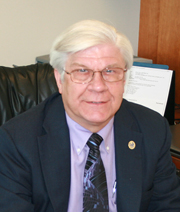
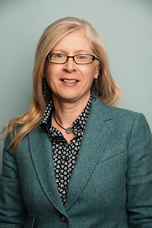 AAPT Officers, Board members, and staff during the 2007 to 2012 period were constrained in actions by the "major recession" within that period and a corresponding reduction in the value of AAPT's long-term investments. Successful attention was given to reducing costs of operations and losses at national meetings, and concentrated efforts were initiated to encourage membership donations - including renewed efforts to fully endow major AAPT awards and medals.
AAPT Officers, Board members, and staff during the 2007 to 2012 period were constrained in actions by the "major recession" within that period and a corresponding reduction in the value of AAPT's long-term investments. Successful attention was given to reducing costs of operations and losses at national meetings, and concentrated efforts were initiated to encourage membership donations - including renewed efforts to fully endow major AAPT awards and medals.

